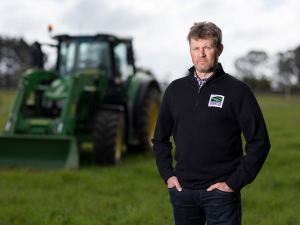At present the overall situation is good due to the rains in early January. Brazendale says clover growth in particular is spectacular. But he says the outlook for the coming weeks is for hotter, drier conditions and pasture growth will likely slow down.
“People are starting to utilise turnip crops and others supplements. In the case of turnips, they struggled to take when it was so wet in November and I suspect they are a bit patchy.
“Maize is much the same, with the crops that were sown early doing well but those sown later getting caught by the November rains and are patchy. In fact, quite a bit of maize has had to be re-sown,” he says.
Brazendale says while many farmers did make a lot of silage, the quality of grass was poor due to the rain and is not up to the normal high standard. It was so wet he says that some farmers were unable to harvest the grass they had on their farms.
As the result of the wet November, Brazendale says milk production in that month crashed, in some cases by up to 20%. But he says the better weather in December saw things pick up and farmers were able to regain some of the production they lost.
“But it is still at a lower level than most farmers would like,” he says.
Brazendale says as present things are humming along on farms in the lower North Island, but says the caveat is the weather in the coming months. He says if there is a dry spell dairy farmers may have to dip into their reserves of silage and other supplements.
It’s a wait and see situation and a lot depends on what happens in the next six weeks he says.
















